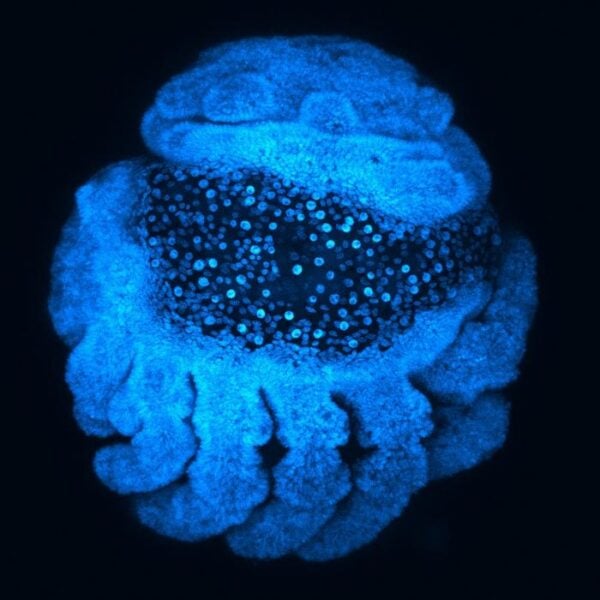Researchers uncover the genetic secret behind arachnids’ narrow midsection
Spiders are known for their distinctive body shape, featuring two main sections connected by a narrow waist. Now, scientists have identified an ancient gene that plays a crucial role in forming this iconic spider silhouette. The discovery sheds new light on arachnid evolution and development, offering insights into the genetic mechanisms that shape diverse body plans in nature.
The Hunt for ‘Waist-Less’
A team of researchers led by Emily Setton from the University of Wisconsin-Madison embarked on a genetic investigation to understand how spiders develop their unique body structure. Their findings, published in the journal PLOS Biology, reveal a previously unstudied gene that is essential for creating the spider’s narrow waist.
The scientists began by sequencing genes expressed in embryos of the Texas brown tarantula (Aphonopelma hentzi) at various developmental stages. This process identified 12 candidate genes with differing expression levels on either side of the developing waist region.
To pinpoint which gene was responsible for waist formation, the team systematically silenced each candidate gene in embryos of the common house spider (Parasteatoda tepidariorum). This meticulous process led to the discovery of a gene they aptly named “waist-less.”
An Ancient Gene with a Unique Function
Interestingly, waist-less belongs to a family of genes called Iroquois, which have been studied extensively in insects and vertebrates. However, an evolutionary analysis suggests that waist-less was lost in the common ancestor of insects and crustaceans. This loss explains why the gene had remained unstudied until now, as much of the previous research focused on insect and crustacean model organisms that lack this particular gene.
“Our work identified a new and unexpected gene involved in patterning the iconic spider body plan,” the authors stated. “More broadly, this work highlights the function of new genes in ancient groups of animals.”
Why It Matters
This discovery is significant for several reasons:
- It provides a deeper understanding of spider development and evolution.
- It highlights the importance of studying diverse organisms to uncover unique genetic mechanisms.
- The findings could have implications for understanding body plan development in other chelicerates, such as scorpions and harvestmen.
The research also underscores the value of investigating genes that may have been lost or modified in more commonly studied organisms. By expanding our genetic investigations to a wider range of species, we may uncover more surprising and informative results about the diversity of life on Earth.
As we continue to explore the genetic underpinnings of animal development, studies like this one remind us that there is still much to learn about the complex and fascinating world of biology.
Test Your Knowledge
- What is the name of the newly discovered gene responsible for spider waist development? a) Waist-maker b) Waist-less c) Waist-former d) Arachno-waist
- Which spider species were used in this study? a) Black widow and brown recluse b) Garden spider and wolf spider c) Texas brown tarantula and common house spider d) Jumping spider and orb-weaver
- Why had the waist-less gene not been studied previously? a) It was too difficult to isolate b) It was thought to be non-functional c) It was lost in the common ancestor of insects and crustaceans d) Scientists were not interested in spider genetics
If our reporting has informed or inspired you, please consider making a donation. Every contribution, no matter the size, empowers us to continue delivering accurate, engaging, and trustworthy science and medical news. Independent journalism requires time, effort, and resources—your support ensures we can keep uncovering the stories that matter most to you.
Join us in making knowledge accessible and impactful. Thank you for standing with us!

